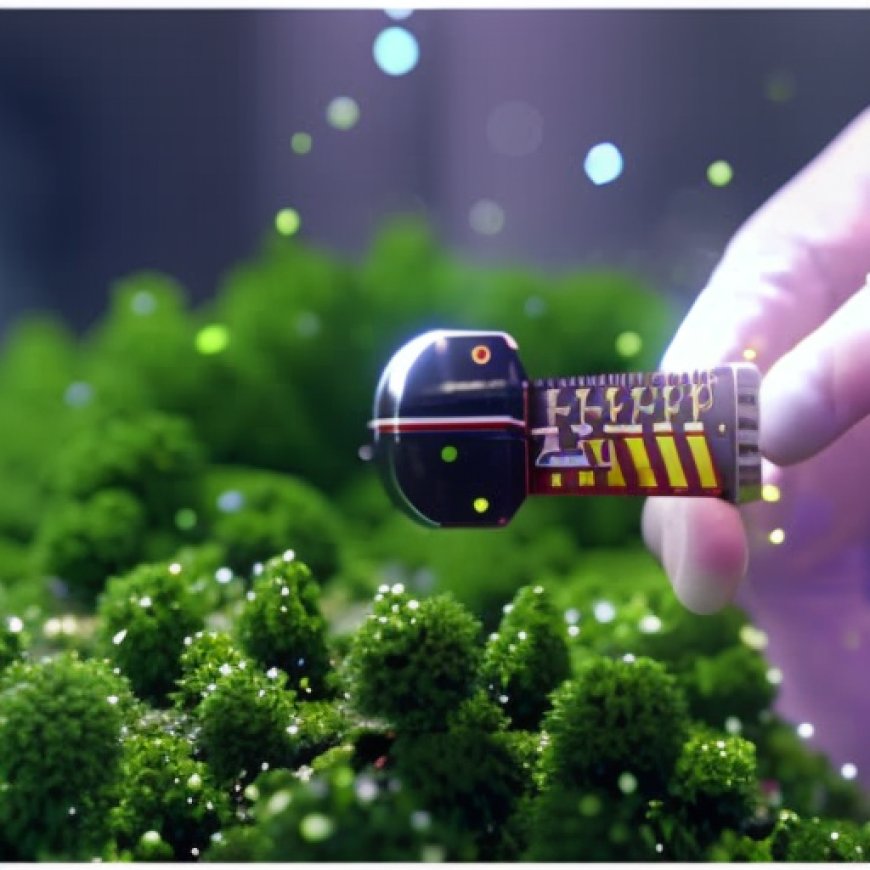Innovative Approach to Glycerol Carbonate Production: A Leap Toward Sustainable Industrialization
Groundbreaking Study on Rapid Production of Glycerol Carbonate - A Step Toward Sustainable Industrialization Medriva


Revolutionizing the Production of Glycerol Carbonate
In the pursuit of sustainable solutions that can replace petroleum-based materials and reduce environmental impact, a groundbreaking study from the Center for Integrated Technology and Organic Synthesis (CiTOS) at the University of Liège has developed a rapid production method for glycerol carbonate. This novel innovation is a promising step towards continuous industrial production, and is part of Europe’s ongoing efforts to incorporate innovative technologies to mitigate environmental damage.
Glycerol Carbonate and its Potential Applications
Glycerol carbonate, a compound produced from glycerol and CO2, has numerous potential applications in various industries. It can be used in the production of lithium batteries, biolubricants, formulation agents, and green solvents. Traditionally, producing this compound was time-consuming and inefficient. However, the new study from CiTOS offers a hybrid approach that combines fundamental and applied organic chemistry. This process allows for the production of glycerol carbonate in less than 30 seconds, opening a new era of possibilities for potential future industrialization.
Environmentally Friendly and Efficient Method
One of the key merits of this new method is its environmental friendliness. It utilizes CO2, a greenhouse gas, and the by-product of the cooking oil recycling industry, thereby cutting down on waste and reducing carbon emissions. This process uses a catalyst to convert glycerol and carbon dioxide into glycerol carbonate. The result is a highly efficient, sustainable solution that optimizes resources and minimizes waste.
Other Related Breakthroughs
Similar to the glycerol carbonate production, there are other noteworthy studies and advancements in this field. The use of Ni-based catalysts supported on La/AlZn/AlLa oxides for hydrogen production via glycerol steam reforming has also been explored. In this study, NiAlLaOx demonstrated remarkable performance in converting glycerol into gaseous products and yielding hydrogen. This shows the potential of glycerol as a valuable resource in producing renewable energy.
Furthermore, the electro-oxidation of glycerol, a byproduct of biodiesel production, has been examined for fuel and feedstock chemicals production for the chemical industry. Detailed understanding of glycerol oxidation mechanisms revealed different adsorption preferences of the intermediates on Pt and Ag surfaces leading to diverse preferred reaction pathways, resulting in the production of different products.
Looking Ahead: Sustainability and Innovation
The strides made by these studies, particularly the rapid production of glycerol carbonate, signify a major leap forward in sustainable industrialization. These innovations not only offer potential solutions to replace petroleum-based materials, but also help us utilize waste and by-products more efficiently. As we move forward, it’s crucial for industries to continue embracing such sustainable technologies to reduce environmental impact and contribute to a greener future.
SDGs, Targets, and Indicators
-
SDG 7: Affordable and Clean Energy
- Target 7.2: Increase substantially the share of renewable energy in the global energy mix
- Indicator: Proportion of total final energy consumption derived from renewable sources
-
SDG 9: Industry, Innovation, and Infrastructure
- Target 9.4: Upgrade infrastructure and retrofit industries to make them sustainable, with increased resource-use efficiency and greater adoption of clean and environmentally sound technologies and industrial processes
- Indicator: CO2 emissions per unit of value added
-
SDG 12: Responsible Consumption and Production
- Target 12.2: By 2030, achieve the sustainable management and efficient use of natural resources
- Indicator: Material footprint, material footprint per capita, and material footprint per GDP
-
SDG 13: Climate Action
- Target 13.2: Integrate climate change measures into national policies, strategies, and planning
- Indicator: Number of countries that have communicated the strengthening of institutional, systemic, and individual capacity-building to implement adaptation, mitigation, and technology transfer
- Target 13.3: Improve education, awareness-raising, and human and institutional capacity on climate change mitigation, adaptation, impact reduction, and early warning
- Indicator: Number of countries that have integrated mitigation, adaptation, impact reduction, and early warning into primary, secondary, and tertiary curricula
Behold! This splendid article springs forth from the wellspring of knowledge, shaped by a wondrous proprietary AI technology that delved into a vast ocean of data, illuminating the path towards the Sustainable Development Goals. Remember that all rights are reserved by SDG Investors LLC, empowering us to champion progress together.
Source: medriva.com

Join us, as fellow seekers of change, on a transformative journey at https://sdgtalks.ai/welcome, where you can become a member and actively contribute to shaping a brighter future.







